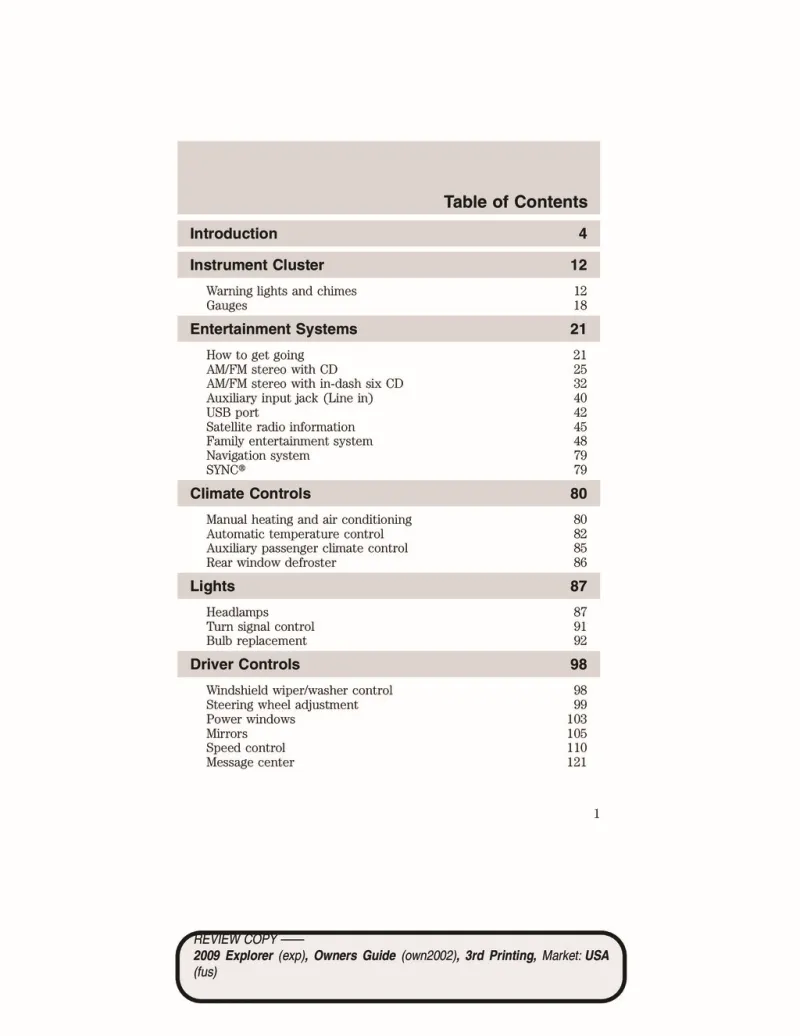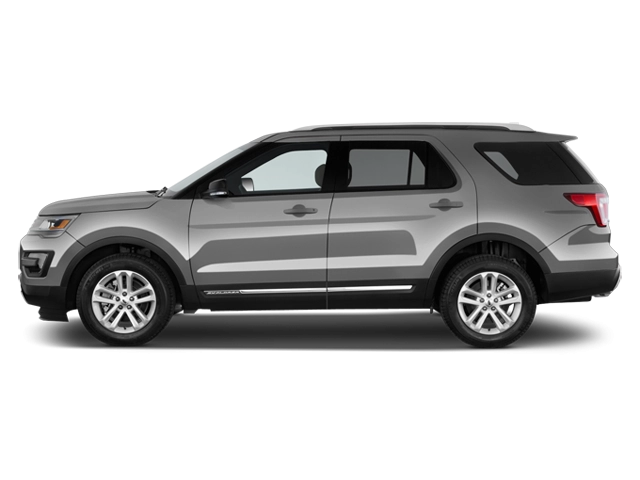2009 Ford Explorer Owner's Manual

Table of Contents
2009 Ford Explorer Overview
Introduction
The 2009 Ford Explorer stands as a robust and versatile SUV, appealing to families and adventurers alike. This model combines rugged capability with comfortable amenities, making it a dependable choice for both on-road and off-road experiences. With a sturdy body-on-frame construction, it supports a spacious interior that caters to passengers and cargo, creating an ideal environment for long journeys or daily commutes.
Powertrains
Under the hood, the 2009 Explorer offers a choice of two powerful engines. The base model is equipped with a 4.0-liter V6 engine producing 210 horsepower and 254 lb-ft of torque, providing ample power for everyday driving. For those seeking additional muscle, an optional 4.6-liter V8 engine delivers 292 horsepower and 300 lb-ft of torque, making it well-suited for towing and off-roading capabilities. Both engines are paired with a five-speed automatic transmission, ensuring smooth and efficient shifting, while the available four-wheel-drive system enhances traction in various conditions.
Trims
The 2009 Ford Explorer is available in multiple trims that cater to a range of preferences and budgets, including the XLS, XLT, Eddie Bauer, and Limited. The XLS base model comes well-equipped with essential features, while higher trims add luxurious touches like leather upholstery, a premium sound system, and advanced technology options, offering a delightful driving experience that can be tailored to individual tastes.
Features
Standard features on the 2009 Explorer include full power accessories, cruise control, and keyless entry. Higher trims enhance comfort with dual-zone climate control, heated front seats, and a rear-seat entertainment system. Safety is paramount, with standard features like stability control, anti-lock brakes, and multiple airbags ensuring drivers and passengers are well-protected on the road.
Owners Manual
The owners manual for the 2009 Ford Explorer serves as an essential guide for understanding the vehicle's features, maintenance schedules, and troubleshooting tips. This comprehensive document provides critical information, empowering owners to maximize their driving experience while ensuring the longevity and reliability of their Explorer.
User manual download
The Ford Explorer owner manual for the 2009 model year is to be found in PDF downloadable format on this page. The owner manual for the model year 2009 is free and in English, but the repair manuals are usually not easy to get and may cost more.
Manual Questions
Fill the form below and someone will help you!

